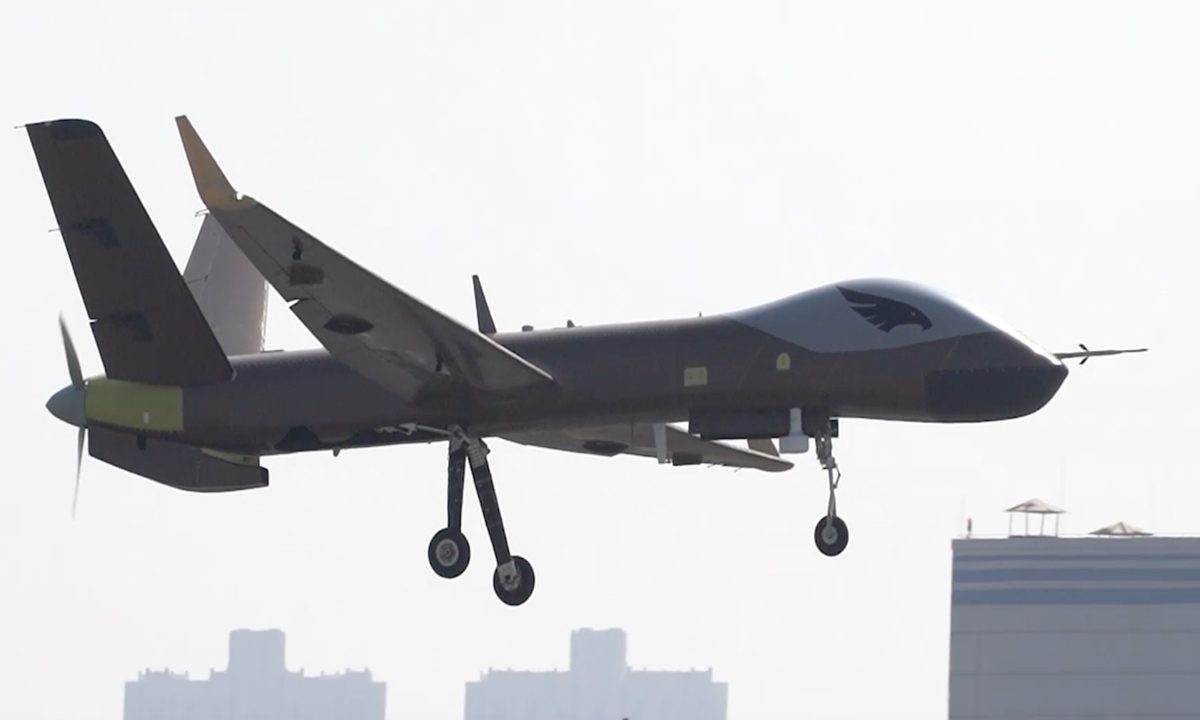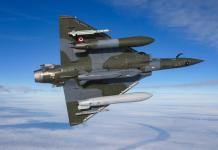Italian authorities reportedy intercepted and seized Chinese military drones at the port of Gioia Tauro in southern Italy. The drones were headed to Libya.
Pakistan’s JF-17 Gets Nuclear Capability? US Report Says PAF Arms ‘Thunder’ With RAAD Nuke Missile
According to The Times, the seizure took place on June 18, when officials impounded three containers packed with the Wing Loong unmanned aircraft systems. These containers had been unloaded from the MSC Arina, a cargo vessel sailing from China.
The shipment, falsely labeled as parts for wind turbines, included two control stations alongside the drones. The UAVs were reportedly intended for Benghazi, Libya, to be delivered to General Khalifa Haftar, who controls the eastern part of the country.
The operation was reportedly initiated following a tip-off from the United States. The interception and seizure of the drones represent a violation of the United Nations embargo on arms shipments to Libya.
This embargo, along with sanctions prohibiting the purchase of Libyan oil, aims to prevent further destabilization of the already fragile political landscape in Libya.

Since the fall of longtime dictator Moammar Gadhafi in 2011, Libya has been mired in conflict, with the country effectively divided into eastern and western factions. Each faction has its own administration and armed forces, and both sides have increasingly incorporated drones into their military operations.
The containers, now under impoundment, will likely undergo further scrutiny as investigators determine the full extent of the network responsible for this arms shipment.
The operation comes two months after two former United Nations employees in Canada were charged with participating in a conspiracy to sell Chinese-made drones and other military equipment in Libya.
Fathi Ben Ahmed Mhaouek, 61, and Mahmud Mohamed Elsuwaye Sayeh, 37, were accused of conspiring to acquire Chinese drones for Haftar in exchange for Libyan oil shipments.
Canadian Police revealed that part of the conspiracy took place during their time at the United Nations, during which their employment provided them with functional diplomatic immunity.
Involvement Of Chinese And Turkish Drones In Libya
Air power has been pivotal in the Libyan conflict, which involves the United Nations-recognized Government of National Accord (GNA) and the forces led by Khalifa Haftar’s Libyan National Army (LNA). Both factions operate aging French and Soviet-era fighter jets, often in disrepair and inadequately maintained.
While manned fighter aircraft have seen action, the predominant role in aerial warfare has been played by unmanned aerial vehicles (UAVs) or drones.
In 2020 alone, close to 1,000 air strikes were carried out using UAVs, leading the UN Special Representative to Libya, Ghassan Salame, at the time to label it “the largest drone war in the world.”
UAVs offer several strategic advantages. They gather crucial intelligence from long distances and execute attacks with higher success rates than manned aircraft. If a drone is lost in combat, its pilot remains safe and can swiftly launch another mission.
The Chinese-made drones were introduced in 2016, heralding a substantial advancement in the military capabilities of Khalifa Haftar’s Libyan National Army (LNA).

These drones, provided by the United Arab Emirates, possess a combat range of up to 1,500km (932 miles), enabling precision strikes across Libya. Their deployment during the battle for Derna proved decisive, shifting the tide against the Shura Council of Mujahideen.
During the 2019 offensive on Tripoli by General Haftar’s forces, Wing Loong drones played a crucial role in pushing GNA troops into a defensive perimeter around the capital.
This escalation prompted Turkish President Recep Tayyip Erdogan to escalate military support for the GNA, introducing Turkish-made Bayraktar TB2 drones.
While smaller and with a shorter range than the Wing Loong, the Bayraktar TB2 effectively targeted LNA ground forces, disrupted supply lines, and attacked previously secure air bases.
The differing capabilities of these UAVs underscore their strategic roles. The Wing Loong II, with its superior cruising altitude, extended range, larger payload, and higher speed, provides the LNA with broader mission flexibility, including long-range strikes and reconnaissance.
In contrast, the Bayraktar TB2, despite its limitations in range and payload, serves the GNA’s needs by disrupting enemy logistics and conducting localized strikes.
The use of UAVs has not only reshaped the dynamics of Libya’s conflict but also highlighted the evolving nature of modern warfare. Their precision, operational flexibility, and cost-effectiveness have made them indispensable assets in strategic operations, influencing tactical outcomes on the ground.
- Contact the author at ashishmichel(at)gmail.com




